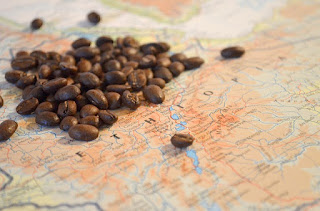What kind of coffee maker is sitting in your kitchen right now?
The chances are good that you own a pod-style coffee machine, or at least know somebody who swears by one; these brewers surged into popularity when Keurig Green Mountain first created a home version of its office coffee machine in the early aughts. Other brands followed and the single-server has settled well into the ranks of the many different contraptions available to get your joe on.
The single-server is ubiquitous, it’s trendy and it’s been around far too long to be a mere fad; if you don’t already have a coffee maker (or are tired of your old one) you may very well be considering a pod machine, and here’s what you need to know.
The Good
One of the great things about buying a single-server in 2015 is the selection; do a search for these machines on Amazon and you’ll see a plethora of familiar brands all touting their own version of this appliance: Hamilton Beach, Capresso, Kitchen Selectives, Black & Decker, Mr. Coffee, Cuisinart, KitchenAid and, of course, Keurig. Most of these brands offer multiple styles of machines with a variety of colors, pricing and doo-dads.
Your purchase will depend on your priorities: is budget your primary concern, or the amount of space you have left in your cabinet? Or are you truly in it for a good cup of coffee?
If taste is your main concern I recommend you revisit our blog on coffee makers and maybe go in another direction; but if you really want a single-serve machine and still want it to taste good treat these babies the way you would any other drip coffee brewer: find out how hot the water gets (between 195 and 205 degrees Fahrenheit is optimal) then find a consumer review confirming that yes, it actually does get as hot as the manufacturer claims, and you’re off to a good start.
The other positive quality that most consumers assign to a single-server is convenience; we’re all busy (especially first thing in the morning!) so wanting something quick-and-easy is understandable. But unless every member of your family is determined to have a completely different flavor of coffee from everybody else, a single-server is no more convenient than a standard auto drip coffee maker—something has to be loaded, a button has to be pushed, and something has to be taken out when it’s done.
The Bad
As we are a coffee roaster and our focus is always on coffee tasting really, really good, single-servers make us frown a little—or more specifically, the things that go inside single-servers: the pods.
Nothing saddens your beans like grinding them long before they’re intended to be used—and then processing them, and shipping them, and setting them on a shelf, and then sending them home with somebody in a big set of many little pods to sit even longer until someone finally notices that last Hazelnut Cream in the dark corner of the pantry.
Freshness is essential to really good coffee, but it’s hard to get without grinding your own. If you’re still holding out for good-tasting coffee from a single-server then, yes, you can have it all—with a reusable filter. These tiny cup-like pods come with everything but the coffee itself, allowing you to use whatever kind of beans you want, as much as you want, ground whenever you want at the size you want.
We’re partial to the Melitta JavaJig (which uses its own itsy bitsy paper filters so you’re not tasting yesterday’s coffee in today’s cup). They’re not difficult to use, but if you’re feeling uncertain check out all the reviews on YouTube.
But if flat coffee isn’t a “bad” for you, how about a flatter wallet? A recent article in The Atlantic estimates that a pound of coffee in K-Cups (Keurig-brand pods) costs $40 per pound. That’s quite the price for something as intertwined with our everyday lives as coffee. (Amusingly, the same article quotes the inventor of the K-Cup as saying he doesn’t own a Keurig because they’re “kind of expensive to use.”)
The Ugly
The National Coffee Association took a poll in January of this year to find how how everyone is brewin’, and while the classic auto drip is still winning with over 50% of Americans single-servers are a strong second with 27% of poll respondents—and pod machine sales are still on the rise. Keurig, the grandfather of the single-serve movement, sold over 9 billion pods in 2014, none of which were recyclable unless their purchaser was willing to pull them apart into their paper, plastic and metal components—you’re not busy, right?
Coffee pod packaging waste is a major and very ugly environmental concern, and it’s certainly no secret (if you haven’t seen the awareness-raising “Kill the K Cup” video yet you’re in for a weird treat.) While companies like Keurig are scrambling to address the problem your most currently conscientious option is to go the reusable filter route, and dump your spent grounds in the garden.
Single-serve coffee brewers would like to be your one-stop kitchen coffee machine; but the variety and convenience they offer come at the sacrifice of taste, your pocketbook and the environment. Thankfully—with a little adjustment—you can drink great coffee without killing your wallet (or your world!) and still reap the benefits of these modern coffee makers.














